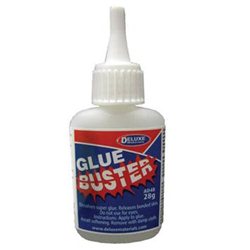A sable brush is a very high-quality brush often used in modelling for detail work thanks to its ability to be finely...
No products
Product successfully added to your shopping cart
There are 0 items in your cart. There is 1 item in your cart.
Search Tips
Christmas and New Year
We are dispatching orders every weekday apart from Christmas Day, Boxing Day and New Year's Day.
If you order is time critical, select next day delivery at checkout.
The shop in Sandown is closed from 25th December, reopening on 30th December.
How to remove excess glue and putty from a model ?
The use of glue and putty is an inevitable part of modelmaking but they don't necessarily always behave as we would like and sometimes they can stray into unwanted places. Likewise, inevitably we sometimes use too much of these materials during the assembly process and we end up with excess material that is not always easy to remove without sanding or cutting away the excess material with a hobby knife. These processes can be effective but as they are somewhat invasive they can leave noticeable scarring on the surface which is then noticeable on the completed model.
One technique that can be effective in removing unwanted deposits is an acetone-based product, such as nail varnish remover. In some cases, it may be sufficient to use a cloth or tissue dampened lightly with acetone. This will chemically remove the excess material without damaging the surface of the model. For stronger products or more substantial deposits, one possible technique to use will be to wrap the parts in question with tissue or paper towel and gently dampen this material with acetone which can then work on the surface. Acetone is generally quick-working so it is a good idea to check after half an hour or so to monitor progress. Inevitably, each situation is different and will require a unique approach so it is best to use a 'little and often' approach which will best allow the modeller to monitor progress.
Click here to receive the tips weekly in your mailbox. You can unsubscribe at any time.








